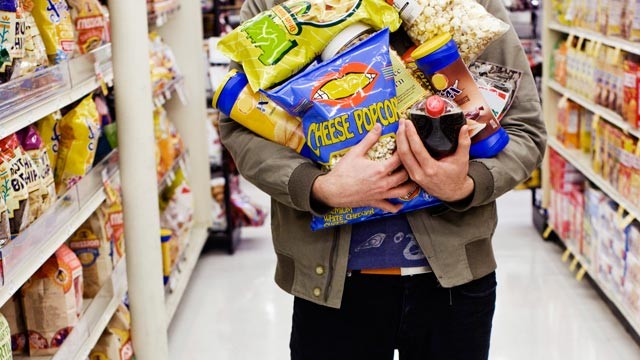FOOD: Many criticize the benefits of food stamps because they see them as a way to abuse government funding even though they are desperately needed to support the survival of the impoverished.
By Chance Ornelas-Skarin, Staff Writer
Crack open that Snapple and enjoy its sugary flavor while you still can. You may be able to afford food today, but who knows what tomorrow will bring? This is the situation that many Americans now face. The need for Food Stamps (a.k.a. the Supplemental Nutrition Assistance Program or SNAP) is even more dire in an economy with a current unemployment rate of 7.2 percent, according to the Bureau of Labor Statistics. People have no source of income and have a difficult time attaining the common necessities, such as food. These people cannot survive without programs like SNAP that are used to keep people fed, even while unemployed.
We, the American people, need to make sure not to cut spending on SNAP because of how desperately many people need it in order to put food on the table. As the Center on Budget and Policy Priorities (CBPP) states,”72 percent of SNAP participants are in families with children; more than one-quarter of participants are in households with seniors or people with disabilities.” These families need aid from government programs when their breadwinners are either unemployed or make too little to buy nutritious food.
The Food Research and Action Center (FRAC) even states that in a study they performed “those with low wages had increased BMI as well as increased chance of being obese.” The poor are at a higher risk for diseases like obesity and heart problems, and SNAP gives them more potential to buy and make healthier food rather than buying something off the oh-so-affordable dollar menu advertised by many fast-food establishments.
FRAC also states that all together about “one in seven people in the U.S. received SNAP.” Though a large amount of people say that many abuse this program, trafficking rates decreased “from about 4 cents on the dollar in 1993 to about 1 cent in 2006-08,” according to the United States Department of Agriculture Food and Nutrition Services. This means people sell their stamps for one cent per dollar of the credit given through SNAP rather than making four cents per dollar. This Program is being abused less efficiently and therefore causes less of a loss to the economy as people try to sell their food stamps.
Another argument against giving money to nutritionally needy families through SNAP is that it is a waste of government funding and hurts the economy. This argument is false since, as stated on CBPP,” every $1 increase in SNAP benefits generates about $1.70 in economic activity.” The increase in economic activity caused by SNAP benefits is one of the best ways to help our economy recover from its current recession.
The economic and health benefits that come from SNAP make it a program worth maintaining. SNAP is an important part of the American economy in that it helps families maintain the nutritional needs of those who are dependent on the low or no income providers of their households. The preservation of SNAP will help the United States economy by providing critical aid to disadvantaged families and stimulating the economy.

